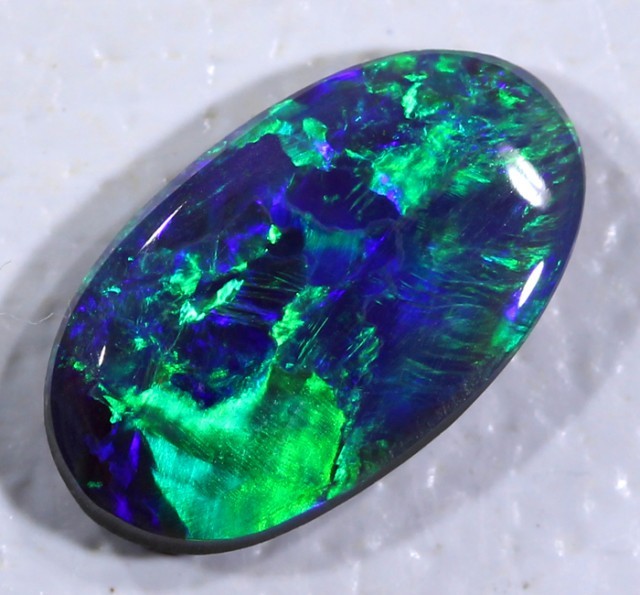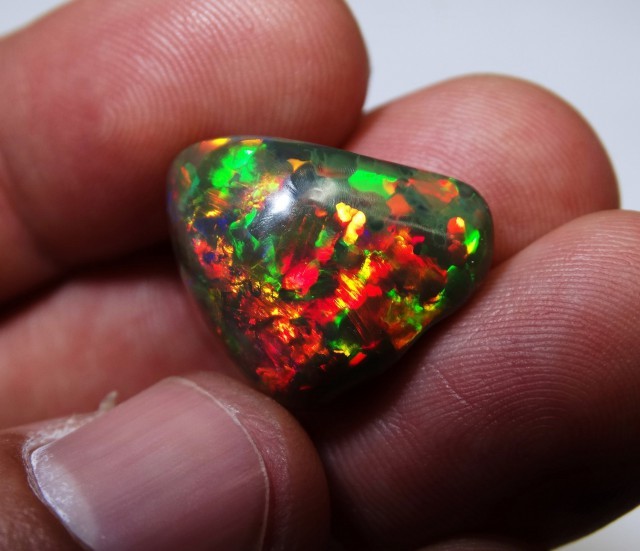
Published at 22nd Oct 2018
Modified at 4th Jan 2023
Opal Popularity Worldwide in 2017
 Australia has always been reported as producing 95% to 97% of the worlds opals. But our statistics are now showing a different pattern. Opal Auctions is worlds largest specialist Opal website that has sold over 330,000 Opals to 184 countries since it started in 2004.
Australia has always been reported as producing 95% to 97% of the worlds opals. But our statistics are now showing a different pattern. Opal Auctions is worlds largest specialist Opal website that has sold over 330,000 Opals to 184 countries since it started in 2004.
To work out percentages, we have calculated on sales only for the last 12 months of just under 40,000 opals sold.
- Australian Opal sales on Opal Auctions in last 12 months are 61%
- International Opal sales on Opal Auctions in last 12 months are 39%
All Opal producing countries have different problems that have affected production over the last 5 years.
Worldwide Trends For Opals
Opals are loved by so many different nationalities as opals are a unique gemstone and patterns do develop in many countries for a certain type of opal. Google Trends is a good source for information in terms of search volumes for traffic of opals. In the last 12 months USA searches for Opal are down around 20% but countries like France, Belgium, and Australia are up. Searches from china are down 79% (based on Baidu search results), so many complicated reasons for this country.

AUSTRALIA OPALS
Opal production is down on most opal fields in Australia. The Government policies and land rights claim by local indigenous people have greatly held up exploration. Many mining leases are held up by court applications, especially in boulder opal fields in Queensland.
Lighting Ridge, the home of the black opal has had many problems from farmers rights to the mining departments strict regulations and limiting new leases.
On top of these problems miners must comply with so many new regulations that didn’t exist several years ago. These range from electrical specifications to strict compliance on land lease ownership .
Opal mining is now complicated and lot more expensive than in past.
Opal miners insist on cash policy so no accurate records are available on production, and the industry is full of rumours and exaggerated stories of production that no one can verify.

Red fire on black opal with a body tone of N1 is very strong on the field with many cash buyers circling miners waiting for these top gem opals. Top gem prices have risen consistently for last 10 years and production is down considerably but hard to get exact figures in this cash industry. This year one opal field in Queensland hit a pocket of fossil wood opals and was extremely popular adding 5.5% to boulder opal sales. Boulder Opal sales are made up of many different types of boulder Opal from different regions so we have created another chart wth the breakdown.

- Trends shows a 79% decrease in searches in China for opals, and Chinese buyers preference was for black opals. Black opal sales dipped to 29% of Australian opal sales on Opal Auctions this year, as many Australian and USA sales were Chinese buyers sending black opals to China.
- In the last quarter boulder opal sales have exploded to outsell black opals in volume and dollar values to 35% of Australian sales on Opal Auctions.
- It is obvious many buyers had price reluctance to increase in Black Opal prices so better-quality boulder opals in the $300 to $800 price points greatly out sell Black Opal.
- European buyers prefer better quality boulder opal than just a year ago and full faced boulder opal is in high demand.
- Black opal sales are still strongest in $3,000 to $10,000 price sales
- Opal jewelry sales were 10% and include silver and gold opal jewelry
- Crystal and south Australian opals were 8% of Australian sales and steady
- Opal doublets were over 5% sales and strong demand for top quality doublets
- Opal triplets were 1.3% as not many manufactures cut now due to increase in rough opal prices
ETHIOPIAN OPALS
Production of Ethiopian opals has been a roller coaster ride the last few years. In 2013 the Ethiopian Ministry mines banned the export of rough opals and prices sky rocketed. This policy only lasted a few months before the ministry realized it was a mistake.

But in 2016 the Ministry implemented a new policy that you need to register to buy opals and for every kilo of rough opal you need to buy the same value of cut polished stones. This also was bad move as many Indian buyers stopped buying and marketing Ethiopian opals. But there are not many, if any? Opal cutters in Ethiopia so it is very impractical to police this. Today most opal rough is bought out through Kenya and carried by hand to world destinations so no accurate figures are available on production quantity. Demand is strong for top pattern Ethiopian opal.
- Ethiopian opal is staggering 94% of International Opal sales with over 16,000 opals sold and 17% these sales were rough or specimen Ethiopian opals.
- Many jewellers worldwide have been introduced to opal with these Ethiopian opals and crazed opal is not as big problem as it used to be.
- Buyers love or hate this opal, as many buyers have fantastic experience and others do not do as well.
- It is now considered and entry point to opals as most crystals are inexpensive but buyer seek those special one with magical patterns that you only see in this opal.
- Ethiopian is considered lowest entry price for opals but magical cabochon opals with strong patterns sell for $3,00 to $5,000 and there is strong following looking for a unique pattern Ethiopian opal
MEXICO OPALS
Mexican opal is Mexico’s national gemstone and are the third largest producers after Ethiopia and Australia. Faceted Mexican fire opal has a strong following as a gemstone. Buyers like clean faceted gemstones and Australian opal do not readily facet like Mexican opal. Production has been stable for many years with no new opal fields found.
Mexican Opal accounts for 3% of international sales.

BRAZIL OPALS
Brazil has never been a high volume producer of opal but has a reputation of good stable veined crystal opals. Opal is found in seams in sandstone or alluvial and suits small scale mining. The government has tried small scale opal mining clusters, but with limited results Brazil Opal accounts for 1.65% of international sales
INDONESIA OPALS
Indonesia does have volcanic opal but most opal sold in this country is Ethiopian opal. Exact production figures are not reliable. Baten does have unique petrified wood with is deep black bitumen colour with veined or flashes opal colours. Opal mining is small scale. 1.2% international sales
PERU OPALS
Mining of this silica quartz style opal is limited to the Andes mountains regions as pink or blue Peruvian opal. Limited demand and production. Less 1% international sales
AMERICAN OPAL
Small production, as this country has never been opal producing in any quantity. Small operations, Virgin Vallery, Idaho, Utah. Less1% international sales
HONDURAN OPAL
Small scale mining operation with limited production. Less 1% international sales
SLOVAKIA OPALS
World’s Oldest opal mines but limited production Tanzania, Madagascar. Less 1% international sales
SHOP FOR OPALS
Search the Opal Encyclopedia
Related Auctions
Related Articles
Australian Black Opal is one of the rarest gemstones on earth. It has every color of the rainbow on a black ground which makes the colors dance.
8th May 2018
Boulder Opal is one of the most undervalue opals valuable on the market. Learn more about this unique opal and browse the beautifully stones we have for sale.
29th May 2019
Latest Articles
An opal’s price comes down to a variety of factors, all of which we’ve broken down in this guide to opal grading and prices. Learn all about opal grading and the prices of each type of opal!
19th Jul 2023
Come on a journey and learn about the healing power of opals from our guest writer Vivien Schapera from Crystal Healing Techniques!
20th May 2023
The Flame (or Fire) Queen opal is the world’s most expensive opal, sold for the modern equivalent of $3 million dollars. Learn all about its history and qualities!
18th Feb 2023
Article Categories
All there is to know about Opals including Black Opals, Ethiopian Opals & Boulder Opal
15 Articles
Check out our fascinating information and articles on all things amazing in the Opal world
43 Articles
Opal Auctions sellers who are approved as opal Verified Sellers
4 Articles





![GEM OPAL IN SHINCRACKER [ AC117 ] 5.73 CTS](https://liveplatforms-production.b-cdn.net/tenants/oa/uploads/images/25000-29999/27488/328f917b302c081bbc9ef9a095cb5f1d.jpg?width=480&aspect_ratio=1001%3A1000)
![GEM OPAL IN SHINCRACKER [AC116 ] 4.71 CTS](https://liveplatforms-production.b-cdn.net/tenants/oa/uploads/images/25000-29999/27487/7146f39391e7f7f17a2ed47300100b5a.jpg?width=480&aspect_ratio=1001%3A1000)
![GEM OPAL IN SHINCRACKER [AC114 ] 12.50 CTS](https://liveplatforms-production.b-cdn.net/tenants/oa/uploads/images/25000-29999/27485/84fd8a7b0cce689499c49333a8fcb1f7.jpg?width=480&aspect_ratio=1001%3A1000)
![GEM OPAL IN SHINCRACKER [ AC109 ] 4.75 CTS](https://liveplatforms-production.b-cdn.net/tenants/oa/uploads/images/25000-29999/27475/dda89faa9117ad651350134094a8f021.jpg?width=480&aspect_ratio=1001%3A1000)